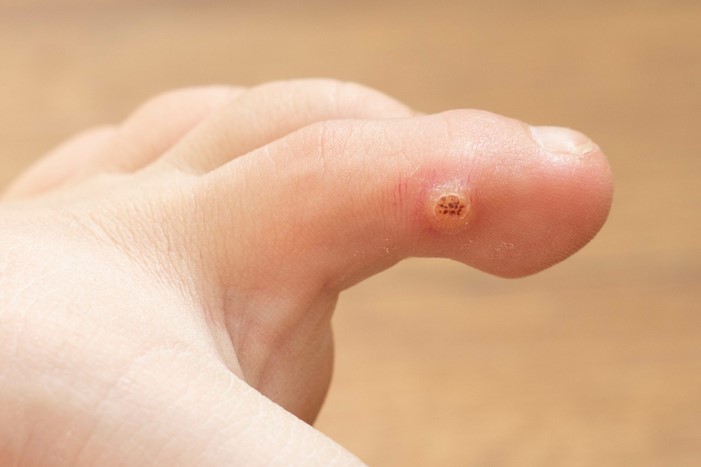
Plantar wart seed removal refers to the process of eliminating hard, grainy growths that appear on the heels or balls of the feet, caused by the human papillomavirus (HPV). These warts can be painful due to their location and are often mistaken for calluses. The term ‘seed’ is used to describe the tiny black dots that appear on these warts, which are actually clotted blood vessels. Treatment options for plantar wart seed removal range from over-the-counter medications to surgical procedures. Prevention tips include maintaining good foot hygiene, avoiding direct contact with warts, and not sharing shoes or socks with an infected person.
Understanding Plantar Wart Seed Removal: Effective Treatment and Prevention Tips
Plantar warts, a common skin condition, are caused by the human papillomavirus (HPV) and typically appear on the soles of the feet. These warts are often characterized by the presence of black dots, commonly referred to as wart seeds. Contrary to popular belief, these black dots are not seeds that can spread the wart but are actually small blood vessels that supply the wart with nutrients. Despite this, the term “wart seed” is widely used, and the process of removing these seeds is often associated with the treatment of plantar warts.
Plantar wart seed removal is a crucial part of the treatment process. The removal of these seeds can be achieved through various methods, including salicylic acid treatment, cryotherapy, laser therapy, and surgical removal. Salicylic acid treatment involves applying a solution or patch that contains salicylic acid to the wart. This acid helps to dissolve the wart tissue, including the seeds, over time. Cryotherapy, on the other hand, involves freezing the wart with liquid nitrogen, causing it to fall off, including the seeds. Laser therapy uses a concentrated beam of light to destroy the wart and the seeds, while surgical removal involves cutting out the wart and the seeds.
Each of these treatment methods has its advantages and disadvantages. Salicylic acid treatment is non-invasive and can be done at home, but it may take several weeks or months to completely remove the wart and the seeds. Cryotherapy is quicker but can be painful and may cause scarring. Laser therapy is effective but can also cause scarring and is usually more expensive. Surgical removal is the quickest method but is invasive and has the highest risk of scarring.
While treating plantar warts is important, preventing them from occurring in the first place is equally crucial. Since HPV, the virus that causes plantar warts, thrives in warm, moist environments, one of the best ways to prevent plantar warts is to keep your feet dry and clean. Avoid walking barefoot in public places such as swimming pools, locker rooms, and showers, as these are common places where the virus can be contracted.
Additionally, boosting your immune system can also help prevent plantar warts. A strong immune system can fight off the HPV virus more effectively, reducing the risk of developing warts. Regular exercise, a balanced diet, and adequate sleep can all contribute to a strong immune system.
In conclusion, plantar wart seed removal is an essential part of treating plantar warts. Various methods can be used to remove these seeds, each with its own set of pros and cons. However, prevention is always better than cure. Keeping your feet clean and dry, avoiding walking barefoot in public places, and maintaining a strong immune system can all help prevent plantar warts. If you suspect you have a plantar wart, it is always best to consult a healthcare professional for an accurate diagnosis and appropriate treatment.Plantar wart seed removal can be effectively achieved through various treatments such as salicylic acid, cryotherapy, laser therapy, and surgical removal. However, these treatments may vary in their effectiveness and may cause discomfort or pain. Prevention is key in managing plantar warts, which includes maintaining good foot hygiene, avoiding direct contact with warts, and not walking barefoot in public places. Regularly checking feet for signs of warts and early treatment can also help prevent the spread of the virus causing the warts.